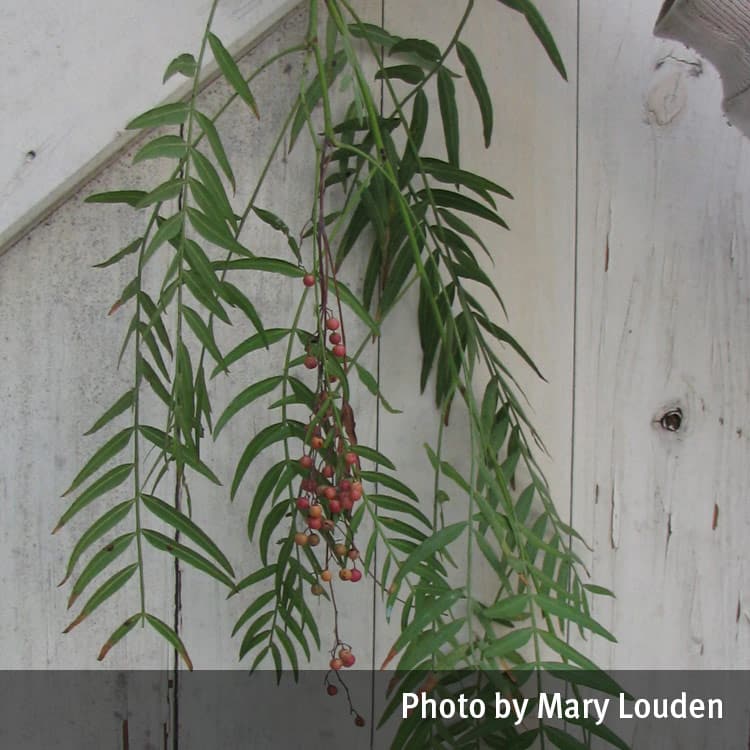Description
A small tree to 8m tall with a drooping habit and soft feathery leaves. Previously popular as a garden ornamental in inland areas, it is now naturalised in some areas of southern Queensland.
The tree is quite resinous and aromatic, especially noticeable when the leaves are crushed. The flowers are small and white, with petals about 2.5mm long, and occur in massed inflorescences. Flowers late spring to early autumn.
The leaves consist of 9 to 19 leaflets that are sub-opposite, narrowly ovate, 2 to 4.5cm long and 0.3 to 0.6cm wide.
Toxicity
Symptoms
If berries are eaten they may cause vomiting and diarrhoea. When flowering, the tree may cause respiratory irritation, sinus congestion and headache.
Images

Details
Common name: Pepperina
Botanical name: Schinus molle.
Other common names: Pepper tree, Molle
Family: Anacardiaceae
General description: A small tree to 8m tall with a drooping habit and soft feathery leaves. Previously popular as a garden ornamental in inland areas, it is now naturalised in some areas of southern Queensland. The tree is quite resinous and aromatic, especially noticeable when the leaves are crushed.
Flowers: The flowers are small and white, with petals about 2.5mm long, and occur in massed inflorescences. Flowers late spring to early autumn.
Leaves: The leaves consist of 9 to 19 leaflets that are sub-opposite, narrowly ovate, 2 to 4.5cm long and 0.3 to 0.6cm wide.
Fruit/Berries: The fruit are berries, shiny pink to red in colour, rounded in shape and about 5mm in diameter, maturing late spring to early autumn.
Other: The sticky, clear sap may cause dermatitis in sensitive individuals.
Last updated: July 2023